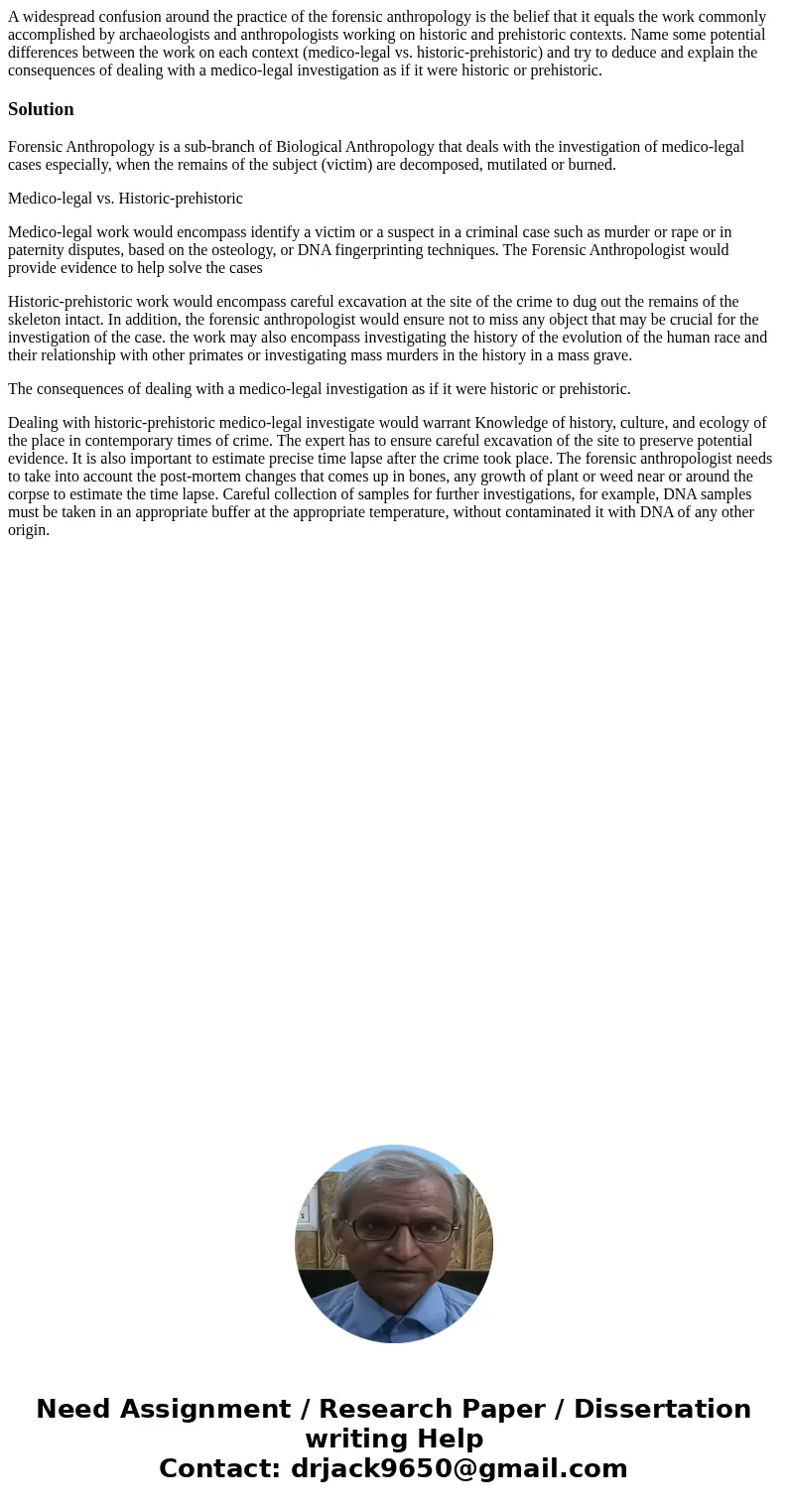A widespread confusion around the practice of the forensic a
A widespread confusion around the practice of the forensic anthropology is the belief that it equals the work commonly accomplished by archaeologists and anthropologists working on historic and prehistoric contexts. Name some potential differences between the work on each context (medico-legal vs. historic-prehistoric) and try to deduce and explain the consequences of dealing with a medico-legal investigation as if it were historic or prehistoric.
Solution
Forensic Anthropology is a sub-branch of Biological Anthropology that deals with the investigation of medico-legal cases especially, when the remains of the subject (victim) are decomposed, mutilated or burned.
Medico-legal vs. Historic-prehistoric
Medico-legal work would encompass identify a victim or a suspect in a criminal case such as murder or rape or in paternity disputes, based on the osteology, or DNA fingerprinting techniques. The Forensic Anthropologist would provide evidence to help solve the cases
Historic-prehistoric work would encompass careful excavation at the site of the crime to dug out the remains of the skeleton intact. In addition, the forensic anthropologist would ensure not to miss any object that may be crucial for the investigation of the case. the work may also encompass investigating the history of the evolution of the human race and their relationship with other primates or investigating mass murders in the history in a mass grave.
The consequences of dealing with a medico-legal investigation as if it were historic or prehistoric.
Dealing with historic-prehistoric medico-legal investigate would warrant Knowledge of history, culture, and ecology of the place in contemporary times of crime. The expert has to ensure careful excavation of the site to preserve potential evidence. It is also important to estimate precise time lapse after the crime took place. The forensic anthropologist needs to take into account the post-mortem changes that comes up in bones, any growth of plant or weed near or around the corpse to estimate the time lapse. Careful collection of samples for further investigations, for example, DNA samples must be taken in an appropriate buffer at the appropriate temperature, without contaminated it with DNA of any other origin.

 Homework Sourse
Homework Sourse